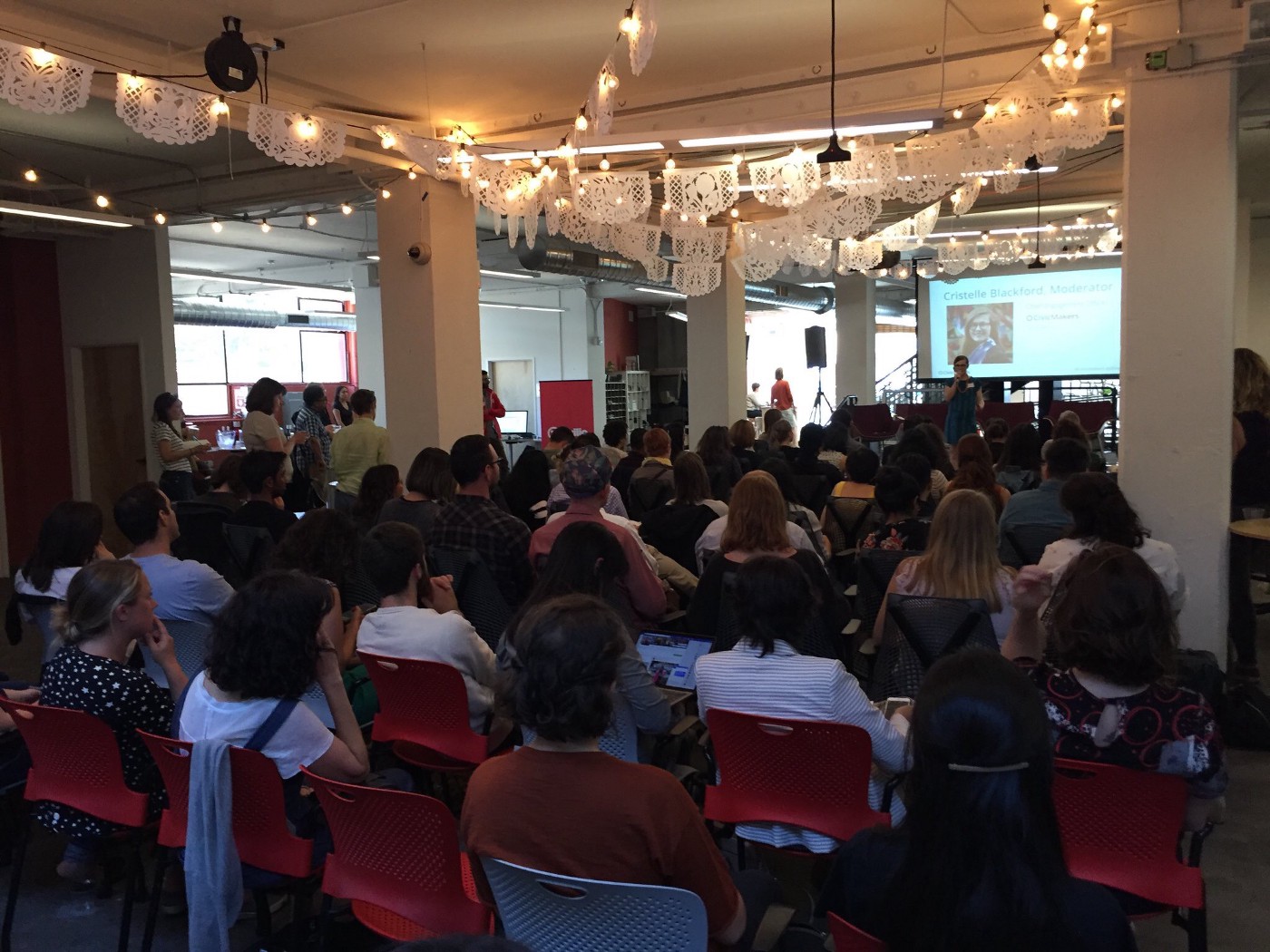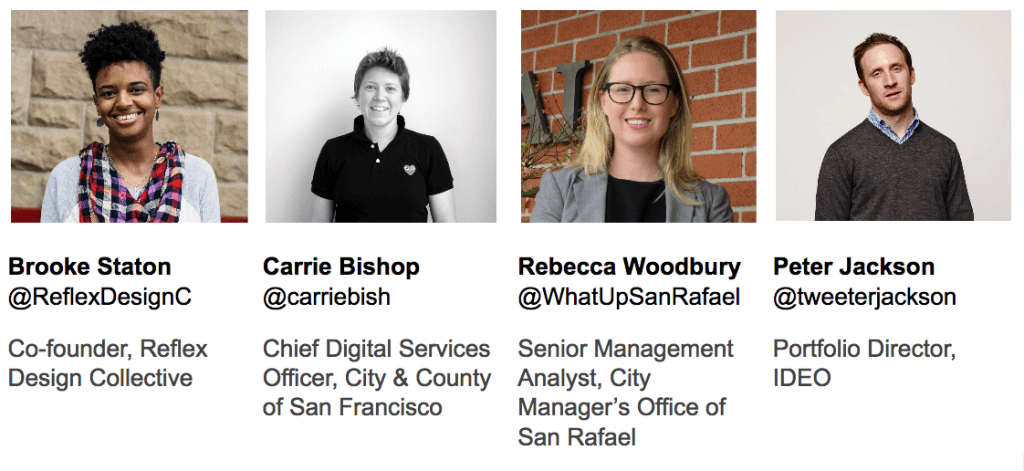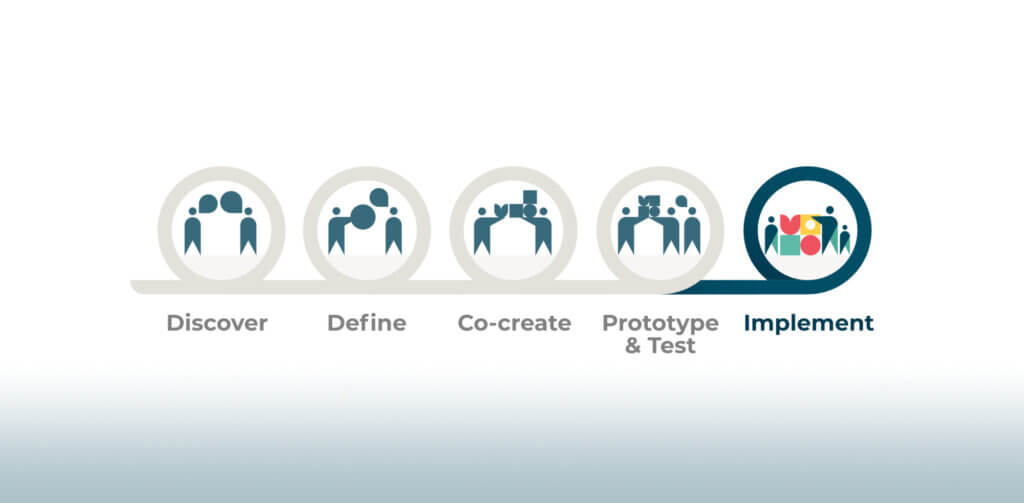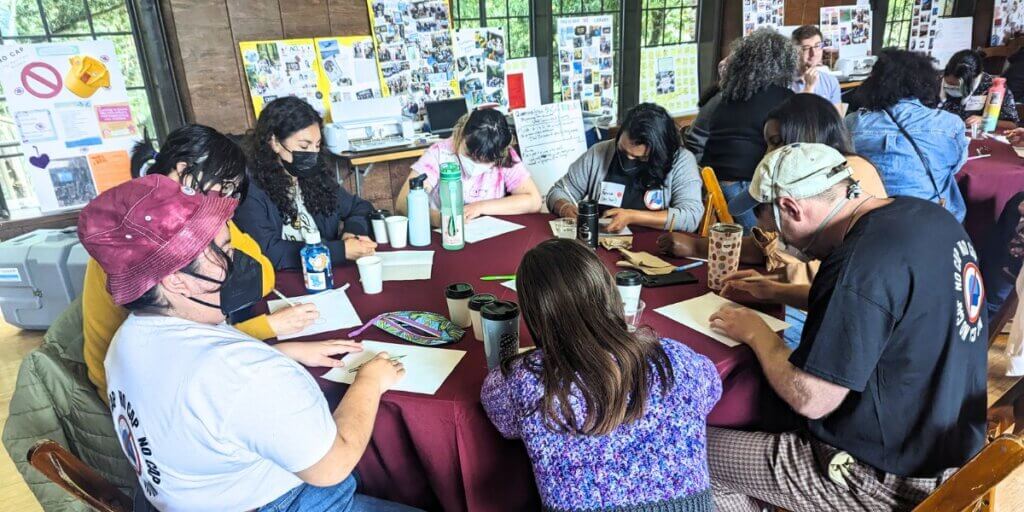Learning from Public Sector Service Designers (SF Design Week: Volume I)

This summer, we had the pleasure of participating in SF Design Week (SFDW), and the honor of having SFDW attendees participate with us!
This year’s theme asked how we might collaborate to create a better future and how, together, we can act on great ideas. At CivicMakers, it’s our mission to translate great ideas into actionable tools — contextualizing design practices to build a more responsive, human-centered public sector. We take on this charge alongside our clients, partners, and (based on the evening’s attendance) an ever-growing community of civic designers.
With service design beginning to take root in government, we took this opportunity to explore how it informs the design and delivery of public services. Structured into two parts, a panel and a happy hour, we gave room for topics introduced at the beginning to be pulled down from the stage and into rich conversations across the room. To our great pleasure, this sparked a lively discussion that stretched and evolved over the course of the evening.
Helping us to frame our exploration, we invited Brooke Staton (Reflex Design Collective), Carrie Bishop (San Francisco Digital Services), Rebecca Woodbury (City of San Rafael), and Peter Jackson (IDEO) to share their insights into the realities of integrating service design into the public sector. Below are some of the highlights that served as fodder for the second part of the evening, the happy hour breakout sessions.
Key Takeaways
Without hesitation, the tone was set: while government cannot choose who it serves, it can control what it regards as the successful delivery of services.
No surprise here — you get what you measure, and too often the measure of success is defined by minimizing false positives. Meaning, efforts are directed at reducing the number of service recipients who shouldn’t have qualified. To follow this logic: offering no support whatsoever has a 100% success rate. Instead, emphasis should be placed on finding those who ARE eligible but underserved — the false negatives.
This fundamental shift in perspective asks you to design a service around who you want to reach, rather than those you don’t.
While people in the public sector share this human-centered mission, they often lack the tools and support to carry this through to the delivery of services. Further, public servants experience constraints around entrenched hierarchies and outdated management models that fail to value creative problem solving at all levels.
To better understand how service design can work within these constraints, we first have to understand the needs of those most impacted by it. Reliably, there is something valuable to be learned from everyone; and with over 100 people in attendance that evening, we had a wealth of knowledge between us.
“Consider lived experience as expertise.” — Brooke Staton
Our happy hour, supplied with delicious food and cold drinks, created the backdrop for more inclusive conversation. It offered a platform that gave voice to lived experience alongside traditional expertise.
We invited attendees to set the agenda for breakout sessions in this second part of the evening. An opportunity to dive deeper into remaining questions and concerns, facilitated by our panelists and our team at CivicMakers. This focused our discussion around four main challenges:
- How can I use my design skills to make a public impact?
- How can we infuse more equity in design?
- Where can I join a community interested in public sector design?
- What is needed to embed service design in the public sector?
To follow this discussion, be sure to check out Volume II: Translating Design into the Public Sector.
A special thanks to our sponsor, Twilio, and to our host (and home) Impact Hub San Francisco for helping to bring us all together!



